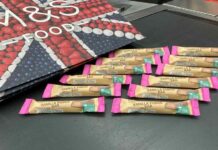Sustainability – not self-evidently related to the pandemic – has been made more important by COVID-19 as people have become more aware of how their actions can affect not only each other but also the environment.
In The WARC Guide to effective packaging, Jessica Trief, executive director of brand strategy at New York-based Sterling Brands, notes how the pandemic has exposed the interconnectedness of our world and how businesses have had to re-evaluate the security of their supply chains.
“Companies must adapt to new production and distribution realities, forcing their businesses to become more sustainable in every sense of the word,” she says.
Decades of globalisation and outsourcing have created efficiencies and interdependencies for firms, but they have also imposed environmental costs. However, as discussion now moves to how to make supply chains less vulnerable to shocks, Trief argues that “there is an opportunity to ‘kill two birds with one stone’ because strategies like reshoring and localising production may produce lower carbon emissions”.
Even if the up-front investment in reorganising sourcing and manufacturing is high, especially for leading CPG firms, “they can use the new investment to later take advantage of sustainable production at scale, and eventually reap the brand benefits”.
Those benefits include faster growth – data from the NYU Stern School of Business shows that there is an economy-wide trend toward sustainability, which is separate from the pandemic but likely amplified by it.
Between 2015 and 2019, conventionally marketed products had a CAGR of just 0.83% compared to 5.86% for sustainability-marketed products.
Sustainability, of course, comes in many guises, of which packaging is just one, but with people spending more time at home and ordering more online during lockdown, so they are generating more waste at home. “It stands to reason that they would also pay more attention to packaging than ever before,” Trief points out.
Brands embracing resource recovery – the practice of recovering and reusing materials or products from waste – can make explicit to consumers their commitment to sustainability. In October 2019, for example, US skincare brand Olay launched a postal refill service for its Regenerist Whip moisturiser, which is sold in a reusable glass jar. The refill is packaged in a 100% recyclable paper-lined pod that slides into the original pack.
Alternatively, packaging with a secondary use can reduce waste and costs, as well as create engagement opportunities: Nestlé Japan is replacing its plastic KitKat wrappers with a paper version that can be reused to make origami planes or write messages.
“In an era with increasingly commoditised distribution, firms must embrace innovative customer engagement strategies that build retention and also strengthen awareness of the brand mission,” says Trief.
For more on sustainable packaging initiatives, read Jessica Trief’s article in full: Ride the green digital wave: How the rise of sustainability and e-commerce can be good for consumer brands.




























